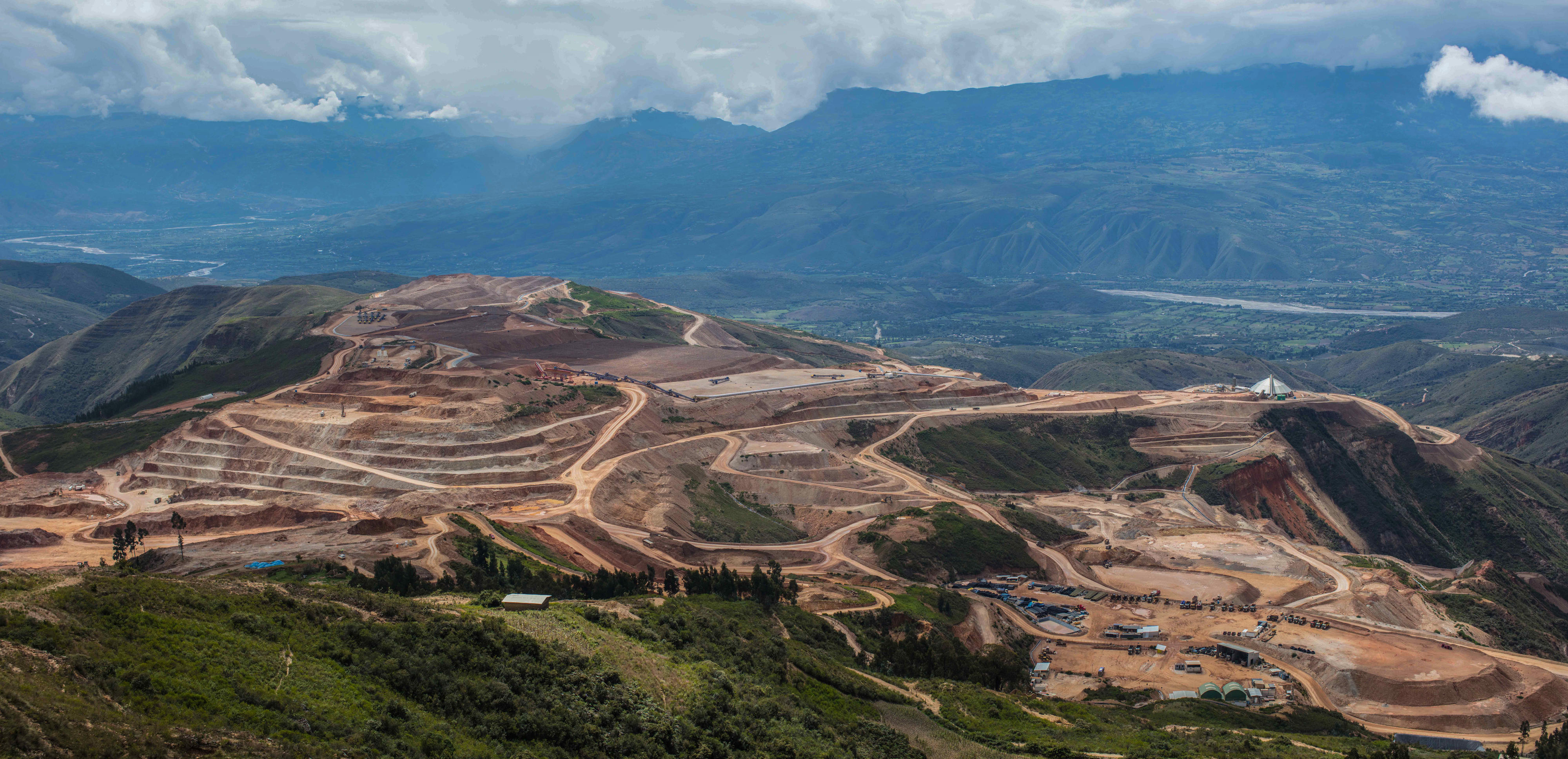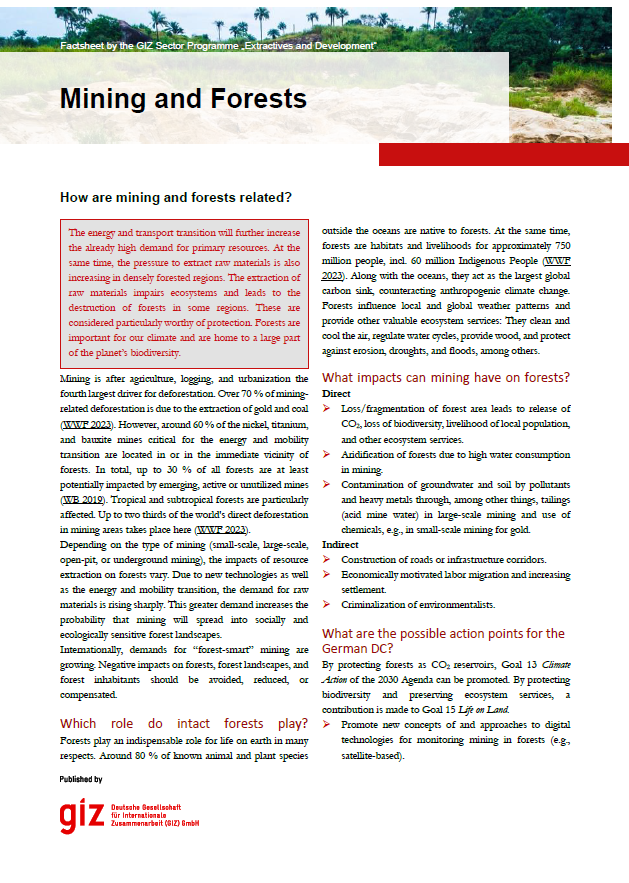Mine in Peru
Copyright© GIZ/Rolando Suaña
21.03.2022 21.03. International Day of Forests - How are mining and forests connected?
Forests, mining and the principle of sustainability
Historically, mining activities required large quantities of wood, for example to stabilize the shafts or to transport the ore. This almost led to an acute timber shortage at the end of the 17th century in Germany. To prevent this, the chief miner of Freiberg Hans Carl von Carlowitz formulated various principles in 1713 to guarantee sufficient quantities of wood were available. His idea that only as much timber should be felled as could grow back through planned reforestation is considered the origin of the concept of sustainability. This laid the foundation for German forestry as well as for the principle of sustainability.
Mining as a driver for deforestation
In the 21st century, timber is less needed directly for mining, but mining is considered a driver for deforestation, because forest areas are cleared for the construction and operation of mines. With 7 %, mining is now the fourth largest driver of deforestation in the tropics and subtropics. About 30 % of the world's large-scale mines are located in forests, with numbers likely to increase.
A low-carbon future must protect the world's forests
The global energy and transport transition are expected to increase the demand for raw materials and thus propel mining activities in forest-rich regions. In light of these expected trends, the call for mining to become more forest-friendly is growing louder and louder. When planning a new mine, efforts to protect forests should be made. During operation, environmental standards should be adhered to, in order to protect biodiversity. Forests are home to about 80 % of the worldwide biodiversity on land. Forest-friendly approaches should also be considered during mine closure where measures for renaturation could be taken.
In the wake of these developments, in 2017 the World Bank made Forest-Smart Mining (External link) an integral part of its Climate-Smart Mining Strategy (External link). It is intended to ensure the sustainable extraction of raw materials while guaranteeing the protection of forests. The German Federal Ministry for Economic Cooperation and Development (BMZ) has supported the World Bank in setting up and implementing the Climate-Smart Mining Strategy since its beginning. Climate-Smart Mining is also part of the German Raw Materials Strategy (External link).
At the European level developments can also be recorded. The EU is currently working on a regulation on deforestation-free supply chains (External link). This should ensure that the production of goods imported into the EU does not contribute to deforestation. But at the moment the regulation does not (yet) refer to extractives.
You can find more information on the impacts of mining in forests and starting points for German development cooperation in this briefing note.


